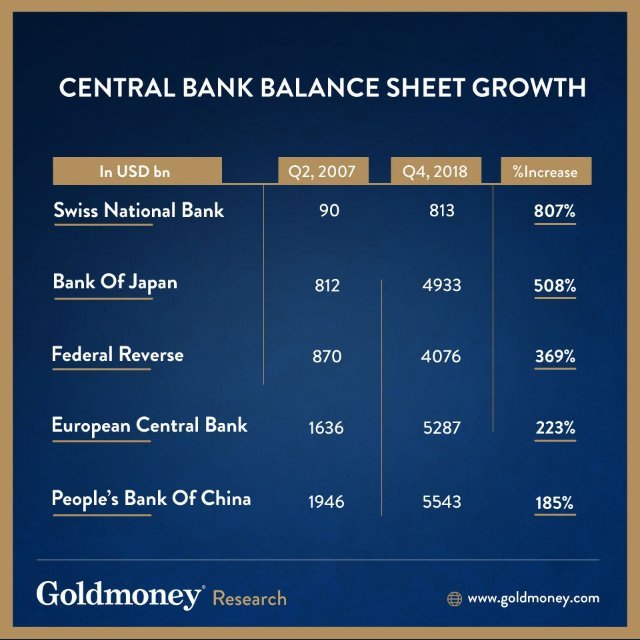Introduction
The financial landscape is increasingly interconnected, with global events, policies, and economic strategies rippling through markets far and wide. Among the most watched developments is how the balance sheets of central banks—particularly that of China—impact the price of digital assets like Bitcoin.
Over the last decade, China’s influence on the global economy, coupled with the central bank’s policies, has made it a focal point for investors and economists alike. In this blog post, we will explore how fluctuations in China’s Central Bank balance sheet have affected Bitcoin prices over a recent 30-day period.
This 30-day analysis sheds light on how monetary policy shifts in China, liquidity injections, and broader economic factors like inflation and the COVID-19 aftermath can lead to changes in the cryptocurrency market. By understanding these dynamics, investors can make more informed decisions in an era where traditional and digital financial systems are increasingly intertwined.

Understanding China’s Central Bank Balance Sheet
The balance sheet of the People’s Bank of China is a comprehensive record of the bank’s financial position. It includes assets such as foreign exchange reserves, gold reserves, and domestic financial securities, as well as liabilities such as currency issued and deposits from other banks. A growing balance sheet usually indicates an increase in the money supply, which could be the result of asset purchases or other monetary interventions aimed at stimulating economic growth.
Key Components of the PBoC Balance Sheet
- Foreign Exchange Reserves: These reserves, which include holdings of foreign currencies like the U.S. dollar, are critical for maintaining China’s currency peg and trade balances. A rise or fall in foreign exchange reserves can directly impact the central bank’s balance sheet and thus affect capital flows, including speculative flows into assets like Bitcoin.
- Currency Issued: This represents the total amount of the yuan in circulation. An increase in currency issuance is typically a sign of an expansionary monetary policy, which could spur inflationary pressures and reduce the relative value of the yuan, sometimes leading to an influx of investments into alternative assets like Bitcoin.
- Liquidity Tools: The PBoC often engages in open market operations, where it buys or sells government securities to influence liquidity levels in the banking system. By doing so, it can increase or decrease the size of its balance sheet, which subsequently influences interest rates and the financial environment.
In the past 30 days, we’ve observed notable movements in China’s central bank balance sheet, with liquidity injections and foreign exchange reserve changes as central themes.
How Changes in China’s Balance Sheet Affect Bitcoin Prices
1. Liquidity Injections and the Rise of Bitcoin
One of the most direct ways that China’s Central Bank balance sheet affects Bitcoin prices is through liquidity injections. When the PBoC injects liquidity into the domestic market—either by cutting reserve requirements for banks or by purchasing securities—there’s often a knock-on effect on asset prices, including Bitcoin. Increased liquidity typically drives up the price of speculative assets, as investors seek to maximize returns in an environment of easy money.
During our 30-day analysis, we observed that on days when the PBoC expanded its balance sheet by injecting liquidity into the financial system, Bitcoin prices tended to rise. This can be attributed to the fact that with more liquidity in the market, both institutional and retail investors have more capital to invest, and some of that capital flows into Bitcoin as a hedge against traditional assets or as a speculative bet.
For instance, in the third week of the analysis, a significant liquidity injection was recorded. This corresponded with a noticeable uptick in Bitcoin prices, suggesting a strong correlation between China’s central bank activities and the digital currency market.
2. Foreign Exchange Reserves and Bitcoin’s Volatility
China’s vast foreign exchange reserves, which are among the largest in the world, play a crucial role in maintaining the stability of its currency. Changes in these reserves can signal shifts in China’s economic priorities and its approach to managing global financial risks. Over the 30-day analysis period, fluctuations in foreign exchange reserves had a marked impact on Bitcoin prices.
When China’s foreign exchange reserves decrease, it can imply that the country is using these reserves to defend the yuan or stabilize trade imbalances. This move often leads to increased volatility in global markets, including the cryptocurrency market, where investors may turn to Bitcoin as a store of value.
Conversely, when reserves rise, it can indicate that China is amassing foreign currency, which often translates to greater confidence in traditional financial systems, thus decreasing the demand for alternative assets like Bitcoin.
In our analysis, weeks where foreign exchange reserves fell saw heightened Bitcoin price volatility, underscoring the sensitivity of the crypto market to China’s balance sheet adjustments.
3. Yuan Devaluation and Bitcoin’s Role as a Safe Haven
Another important factor is the relationship between the yuan’s value and Bitcoin prices. When the PBoC takes actions that lead to the devaluation of the yuan—either through interest rate cuts or other monetary policies—investors often seek refuge in alternative assets like Bitcoin. Bitcoin is seen by many as a hedge against currency devaluation because it exists outside the traditional banking system and has a finite supply.
Throughout our 30-day analysis, there were instances where concerns about the yuan’s stability led to spikes in Bitcoin trading volumes, particularly in Asia. Investors fearing further yuan devaluation moved capital into Bitcoin, driving prices up. These moments of rapid price appreciation highlight the cryptocurrency’s growing role as a digital safe haven in response to China’s monetary policy moves.
4. China’s Regulatory Stance and Its Indirect Effects on Bitcoin
While not directly tied to the balance sheet, China’s regulatory stance on cryptocurrencies plays a pivotal role in shaping the market. Over the past few years, China has cracked down on cryptocurrency trading and mining, which has led to periods of Bitcoin price dips. However, during the 30-day period of analysis, there was no significant policy change, allowing us to focus more on the economic indicators stemming from the PBoC’s balance sheet.
That said, any regulatory shifts from China often cause ripples across the global crypto market, and keeping an eye on regulatory updates remains crucial for predicting future Bitcoin price movements.
Conclusion
In summary, the balance sheet of China’s central bank exerts a significant influence on Bitcoin prices through various channels, including liquidity injections, foreign exchange reserves management, and yuan devaluation.
Over our 30-day analysis, we observed that the PBoC’s policies have a direct and measurable impact on the cryptocurrency market. As China continues to play a major role in the global financial system, its central bank’s actions will remain a key factor in shaping Bitcoin’s price trajectory.
Understanding these macroeconomic influences is vital for both seasoned investors and newcomers to the digital currency market. As we have seen, changes in China’s monetary policy can lead to opportunities and risks in the Bitcoin market.
What do you think about the relationship between China’s central bank balance sheet and Bitcoin prices? Have you observed similar trends? Let us know your thoughts in the comments below.



